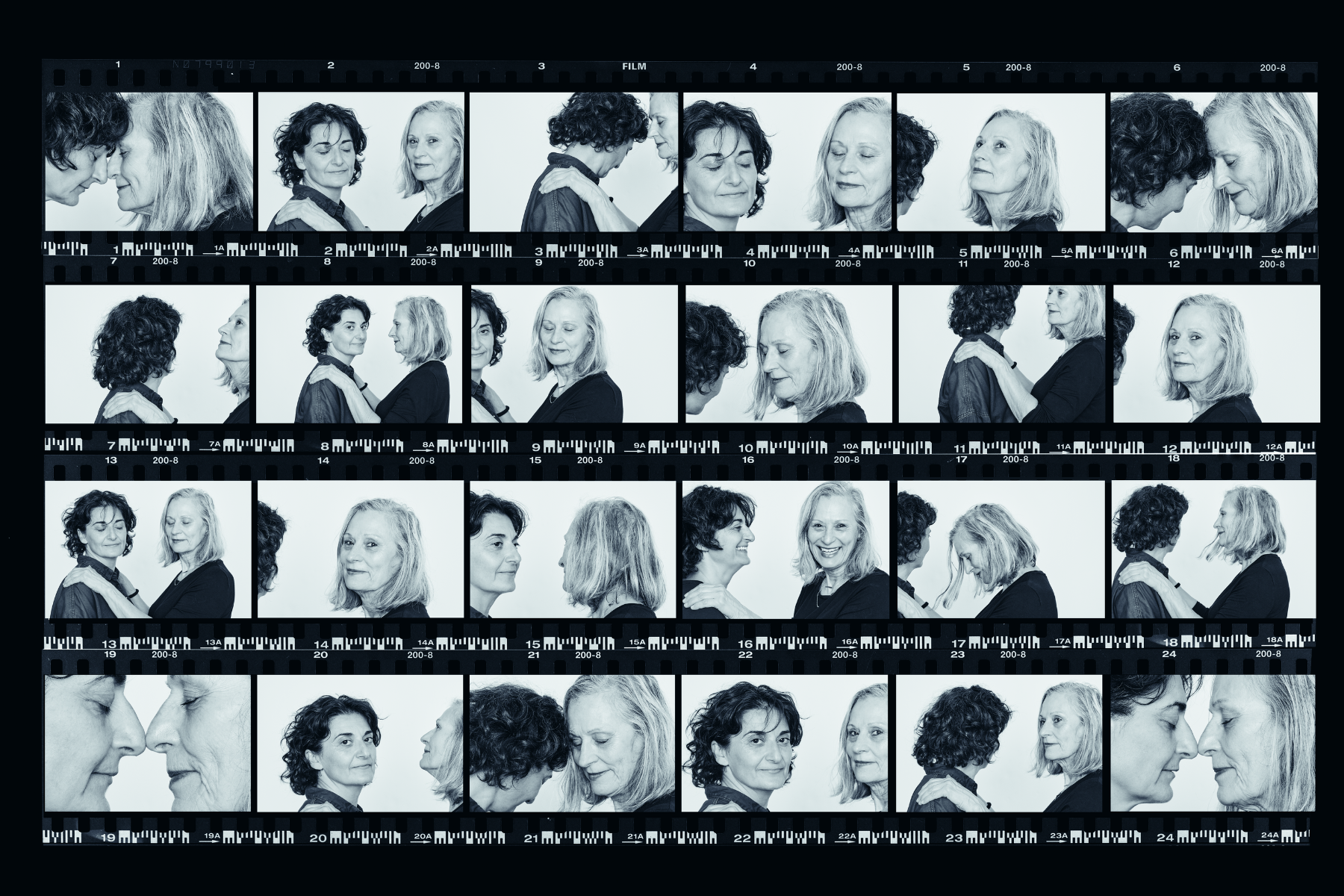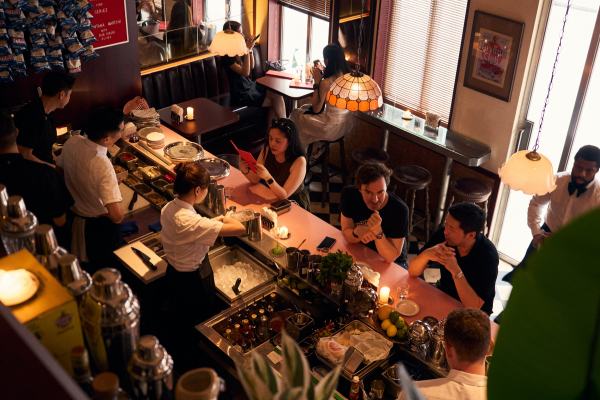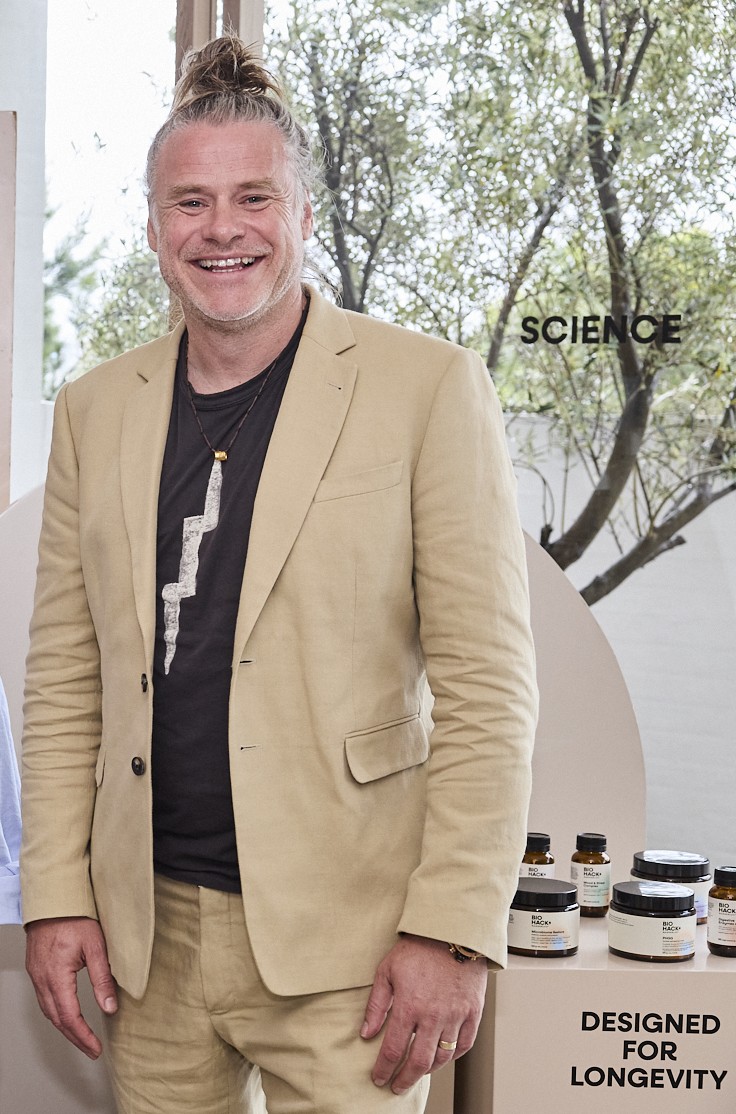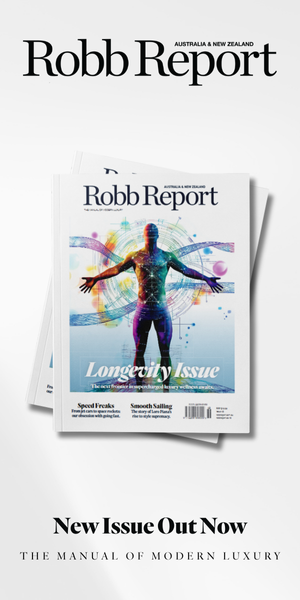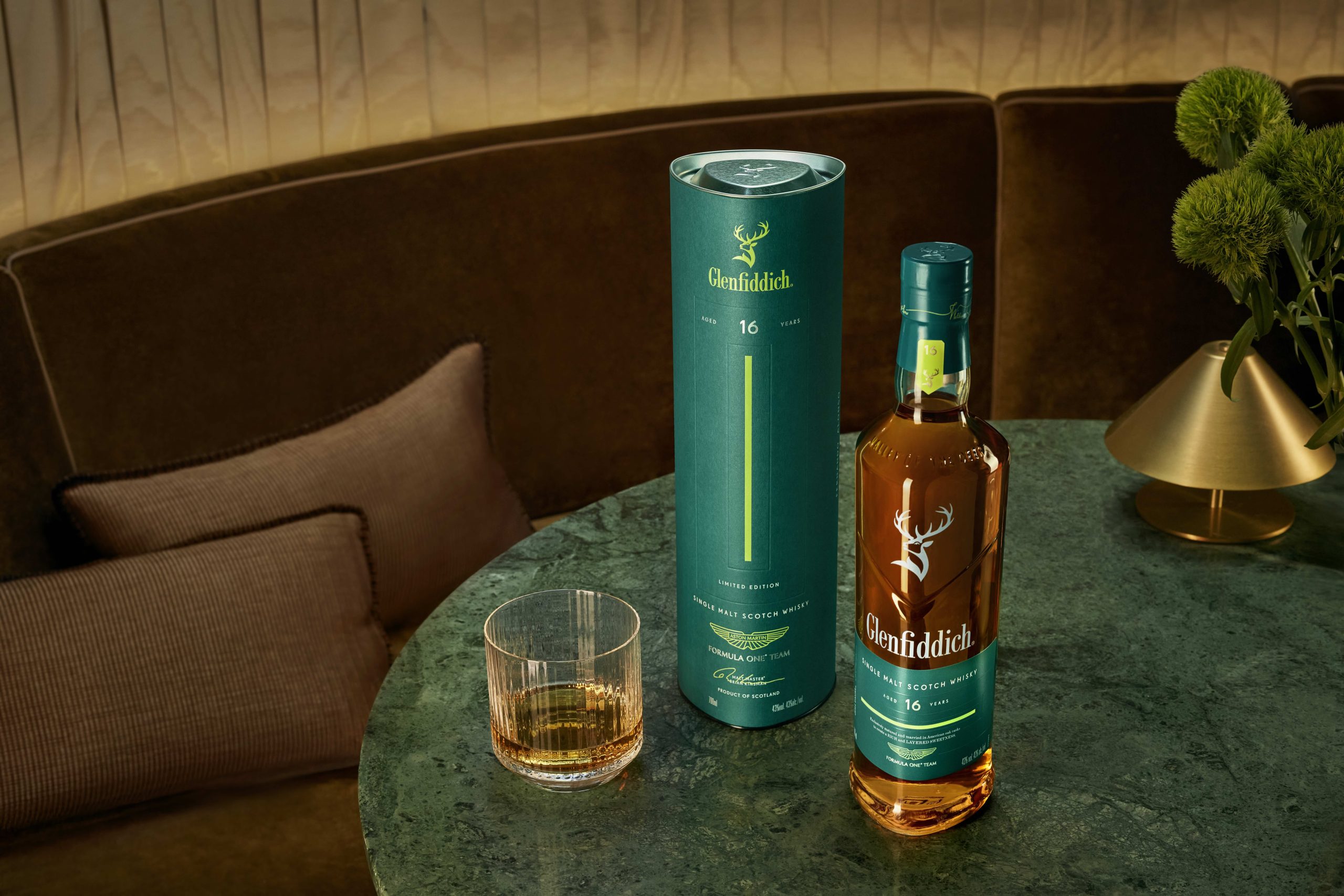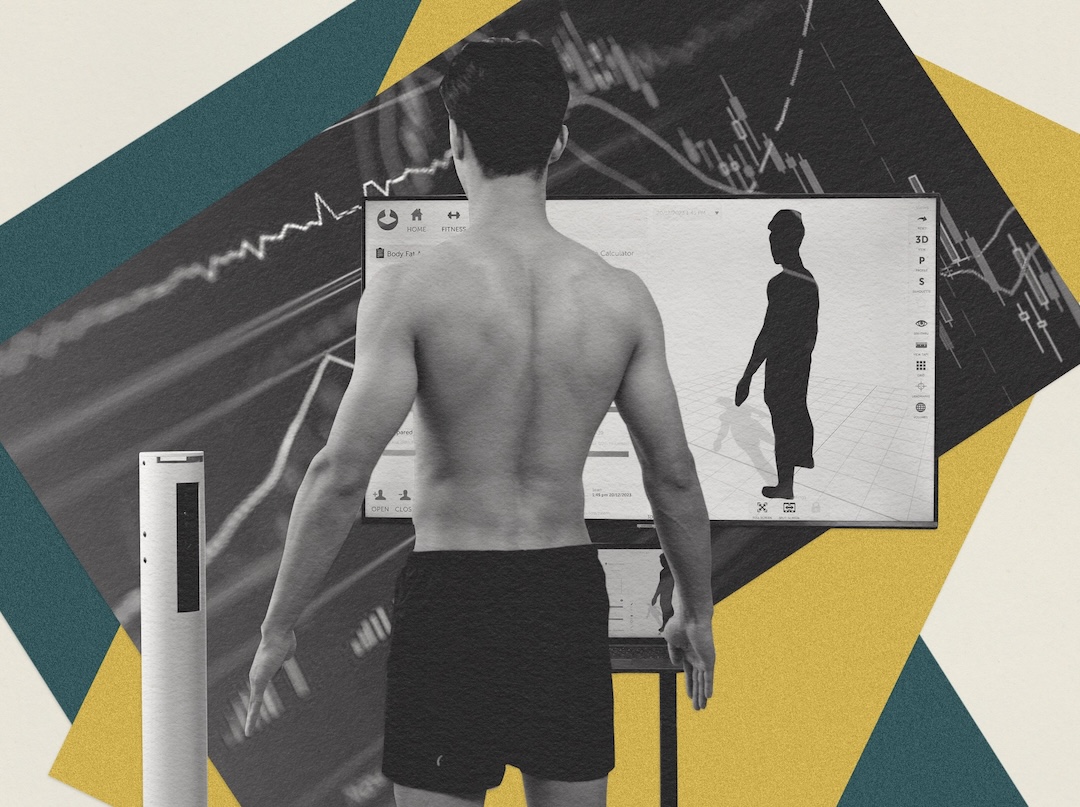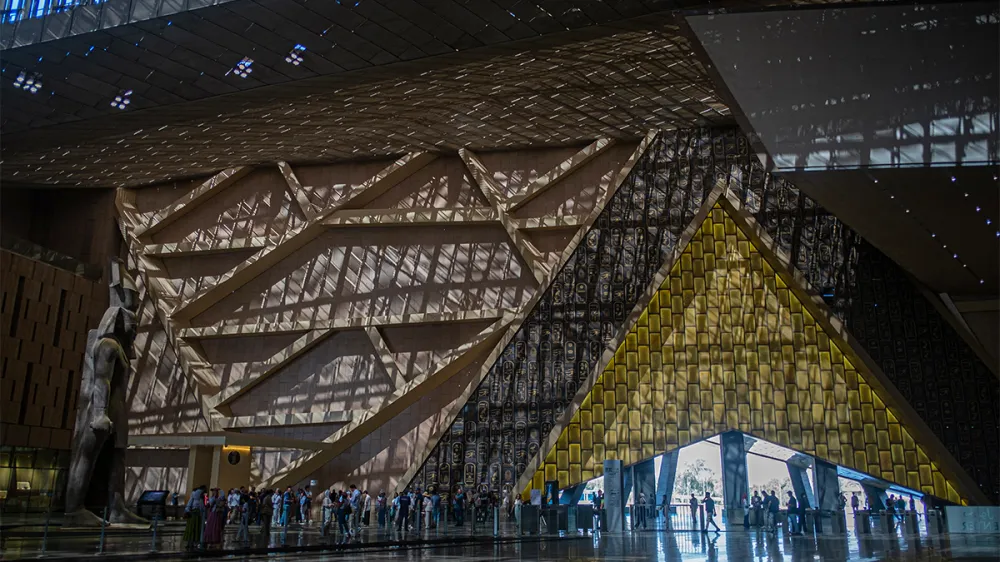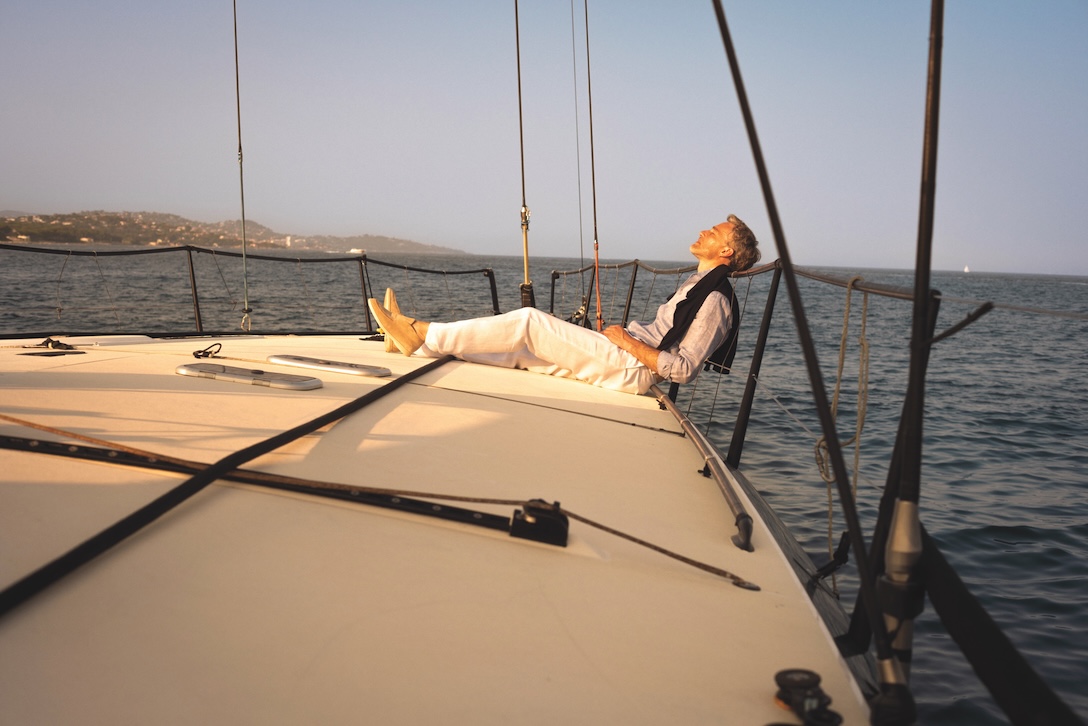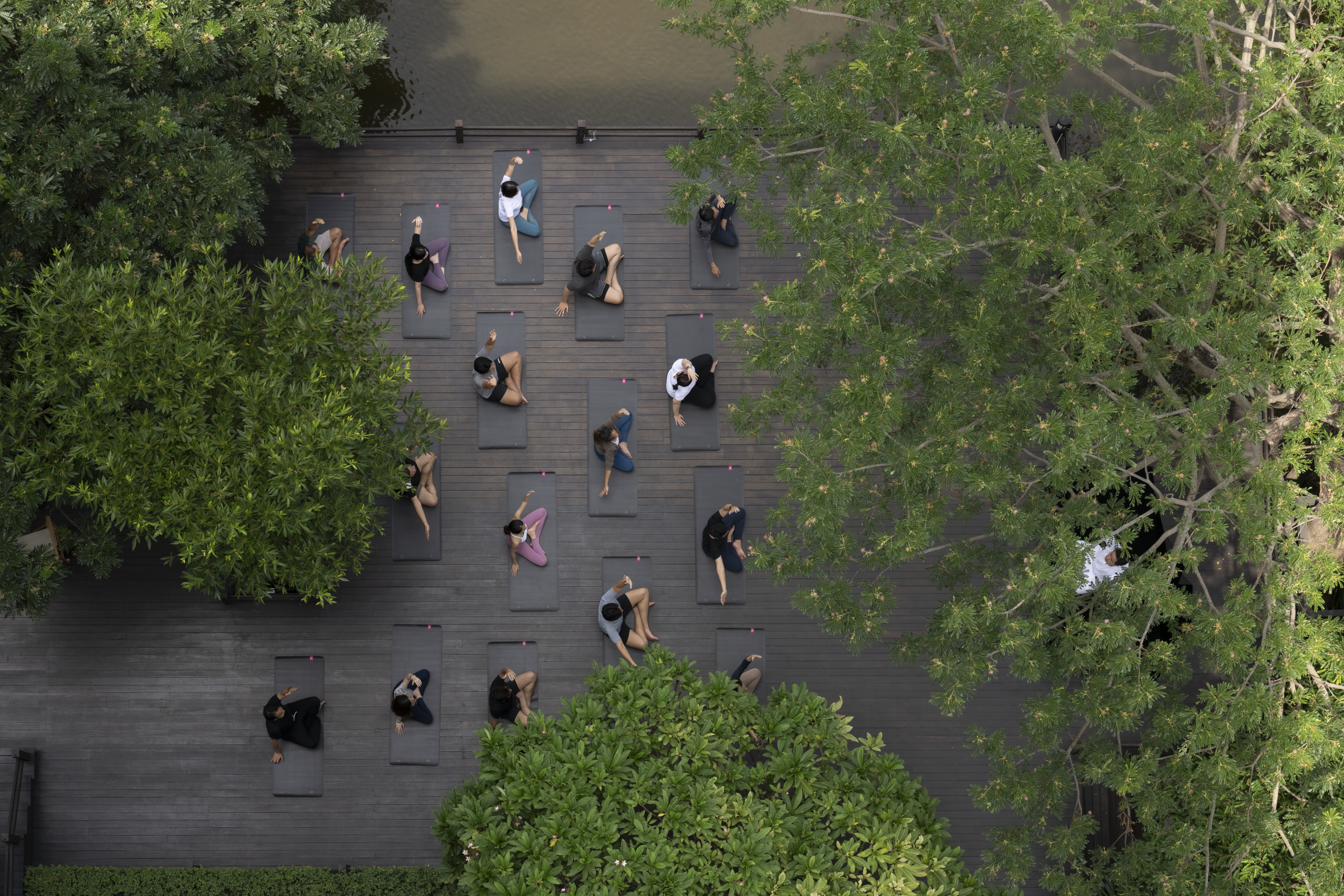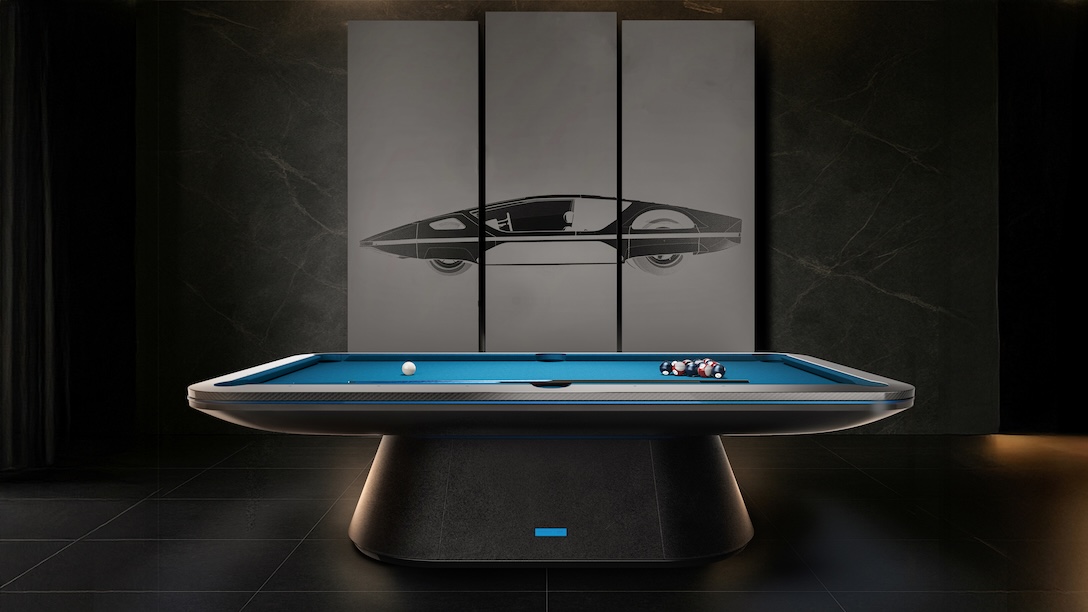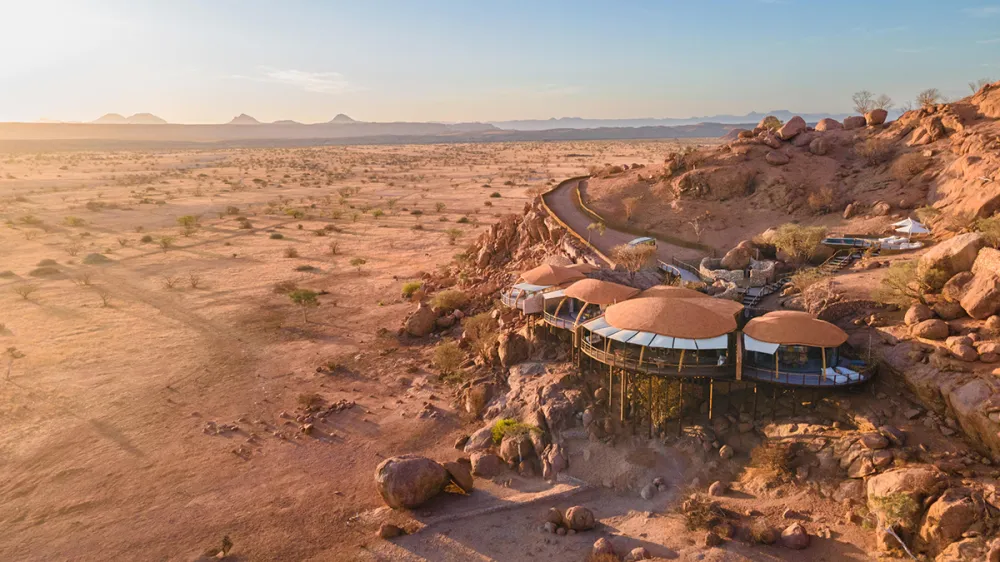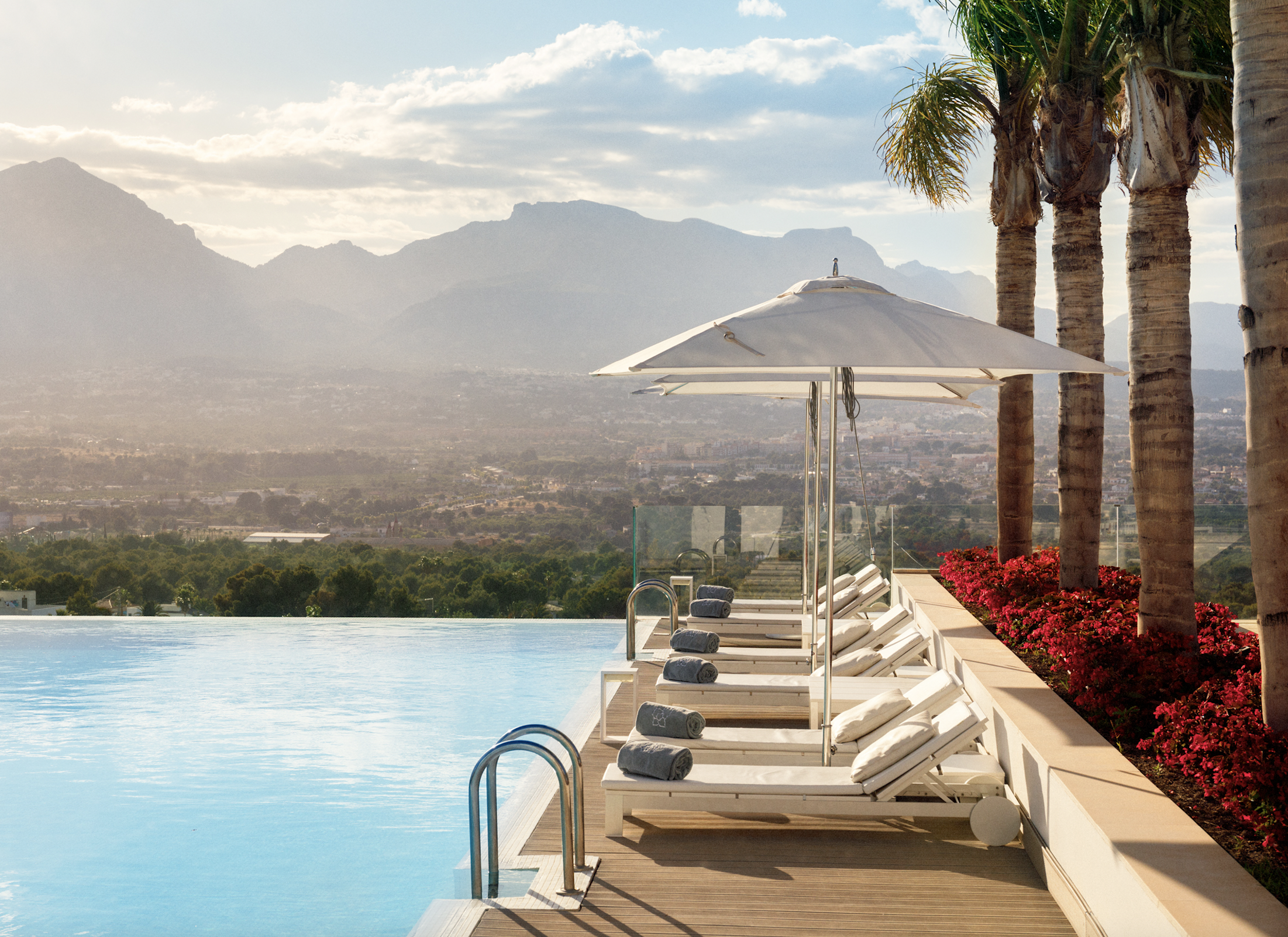
Balancing Act
Armed with new research about the inextricable link between our guts and our brains, a forward-thinking health resort on the Mediterranean is working to bring them into harmony.
Related articles
It might sound blasphemous to visit Spain, the land of paella, pan con tomate and patatas bravas, and choose to dine on miso soup with a side of algae. But that’s my meal one evening at SHA Wellness Clinic, a health resort in Alicante whose terrace restaurant overlooks the Mediterranean Sea. Instead of enjoying it with a glass of rosé, I wash it down with a cup of umeboshi tea, a soupy brew made from the funky, salty Japanese plum that’s known to be an antibacterial superfood.
The menu isn’t part of some newfangled scheme to shed kilos. Rather, the macrobiotic drinks and dishes all have microbiome-boosting properties that alleviate bloating and support gastrointestinal health, the target of the new “gut-health-focused pack”. The week-long regimen—crammed with specialist consultations, colon cleansing and other stomach-healing treatments—can be added onto SHA’s existing programs. It comes at a time when emerging research indicates that the link between the GI tract and the brain may be far more crucial than Western medicine has previously acknowledged. Findings suggest that the digestive system heavily impacts our well-being and, when out of whack, accelerates anxiety and even depression.
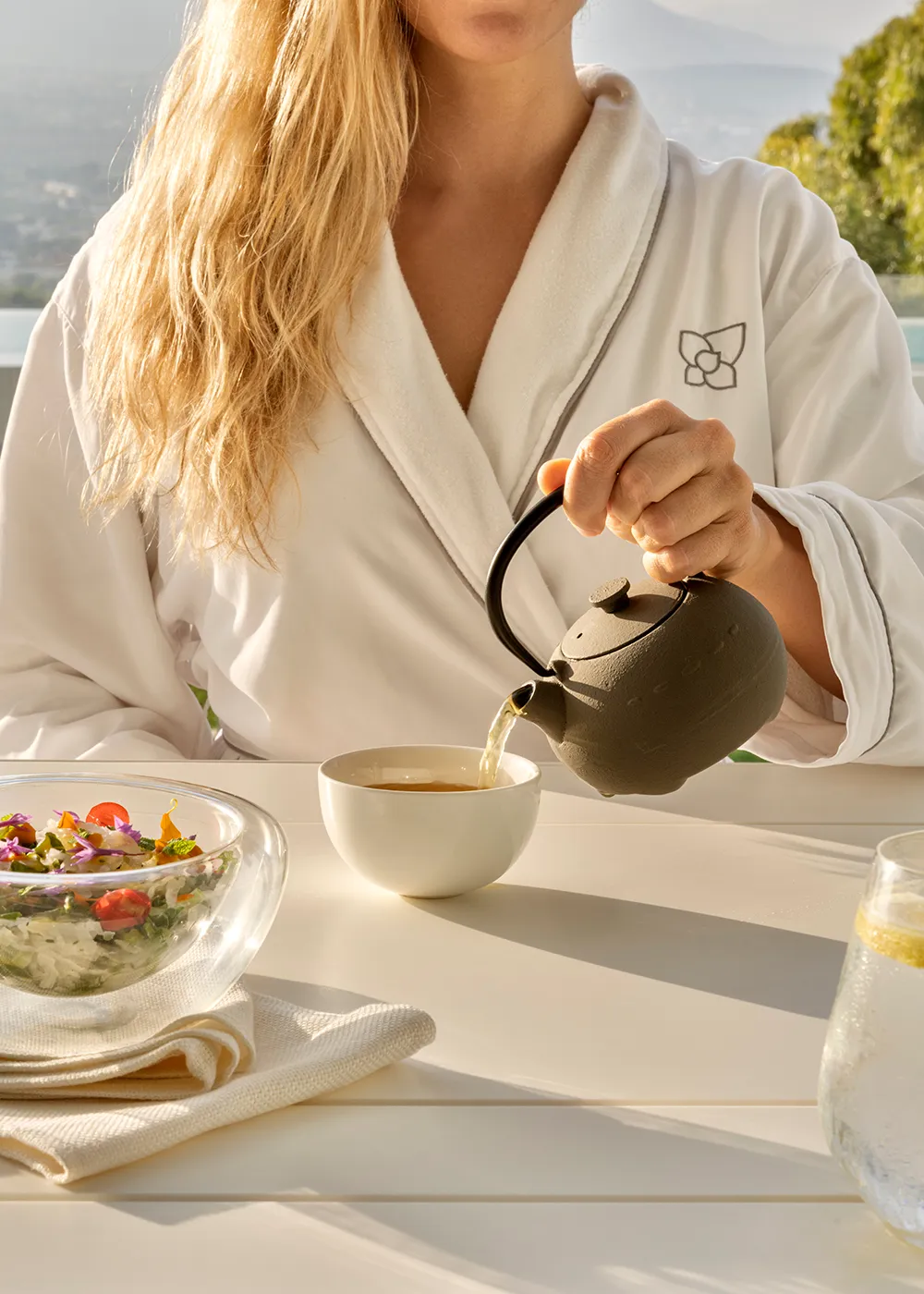
The SHA retreat, which sits on the edge of a nature preserve and offers brilliant water views, opened in late 2008. Since then, it has made a name for itself with luxurious, nutrition-centric programs designed to address everything from healthy ageing to weight loss. Stays can range from four days to three weeks and are administered in a state-of-the-art facility under the care of a team of physicians and alternative healers. Having experienced my own set of digestive trials and tribulations after picking up parasites during my travels, plus ongoing inflammation from a bad bout of dengue fever years ago, I figured a week of nutritional rigour and high-touch therapies in the Spanish sunshine couldn’t hurt.
“In recent years, the knowledge of the gut microbiota has advanced leaps and bounds,” says Mariel Silva, MD, one of SHA’s medical practitioners. “This research has led to an understanding of the importance of digestive health for optimal health. This means that if the function of the nervous system is altered, the function of the digestive system is altered, and the same happens in the reverse direction. As a consequence, when you have stress, you get dysbiosis [the medical term for an imbalance of bacteria], and when you have dysbiosis, you don’t tolerate stress.”
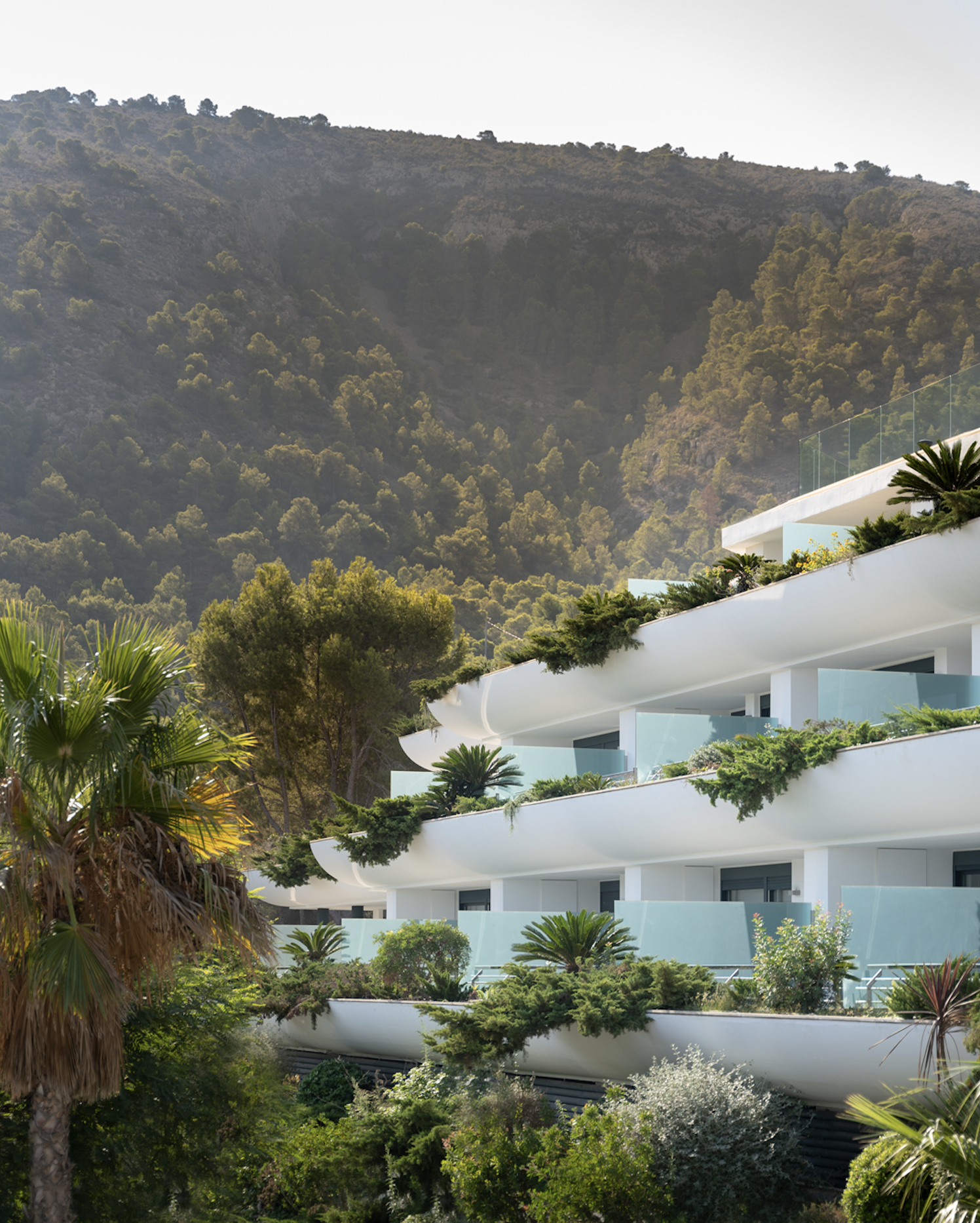
One 2019 study, for example, found that mental tension and depression can alter the composition of gut bacteria, which in turn can release metabolites and toxins that cause a vicious cycle of problems. Another article published later that year highlighted an association between Western diets filled with processed foods—which already correlate with chronic illnesses such as diabetes and cardiovascular issues—and increased gut inflammation, which the authors argued can promote other inflammatory diseases.
“Countless people have walked around for years with gut issues,” says Maura Henninger, ND, a New York City–based naturopathic doctor who specialises in gastro health. “The explosion in research has helped immensely.” Increasingly, studies are showing how simple hacks such as altering our diets or taking probiotics can, in some cases, be more effective than prescription antidepressants. “Studies in laboratory mice have shown that certain probiotics can increase the production of GABA,” she notes, referring to a neurotransmitter manufactured by gut microbes that helps minimise feelings of fear and stress, “and reduce anxiety and depression-like behaviour”.
But while the scientific research and the quest for solutions to bring the gut and the brain back into balance are new, the link between mind and stomach is as old as humanity. “We have started to understand more about how they are intimately connected,” says Tim Spector, MD, a British epidemiologist and professor who has dedicated years to researching the microbiome and recently published a new book, Food for Life: The New Science of Eating Well. “I think there’s a growing realisation that the food we eat plays a pivotal role in health,” he adds. “It is ultra-processed industrialised foods that seem to be wreaking havoc with our microbes and metabolism.”
Henninger points to integrative medicine, which takes an holistic approach that embraces both biomedical and alternative solutions, as a successful way to improve digestive health. “Where Eastern medicine and naturopathic medicine come in is that they have been used to treat gut issues successfully for generations. They’ve used tools like botanical medicine, diet, and acupuncture,” she says. “While they didn’t always have the definitive weight of research behind them—although they increasingly do now—they were inarguably effective. And they continue to be,” she notes. “Science is catching up.”
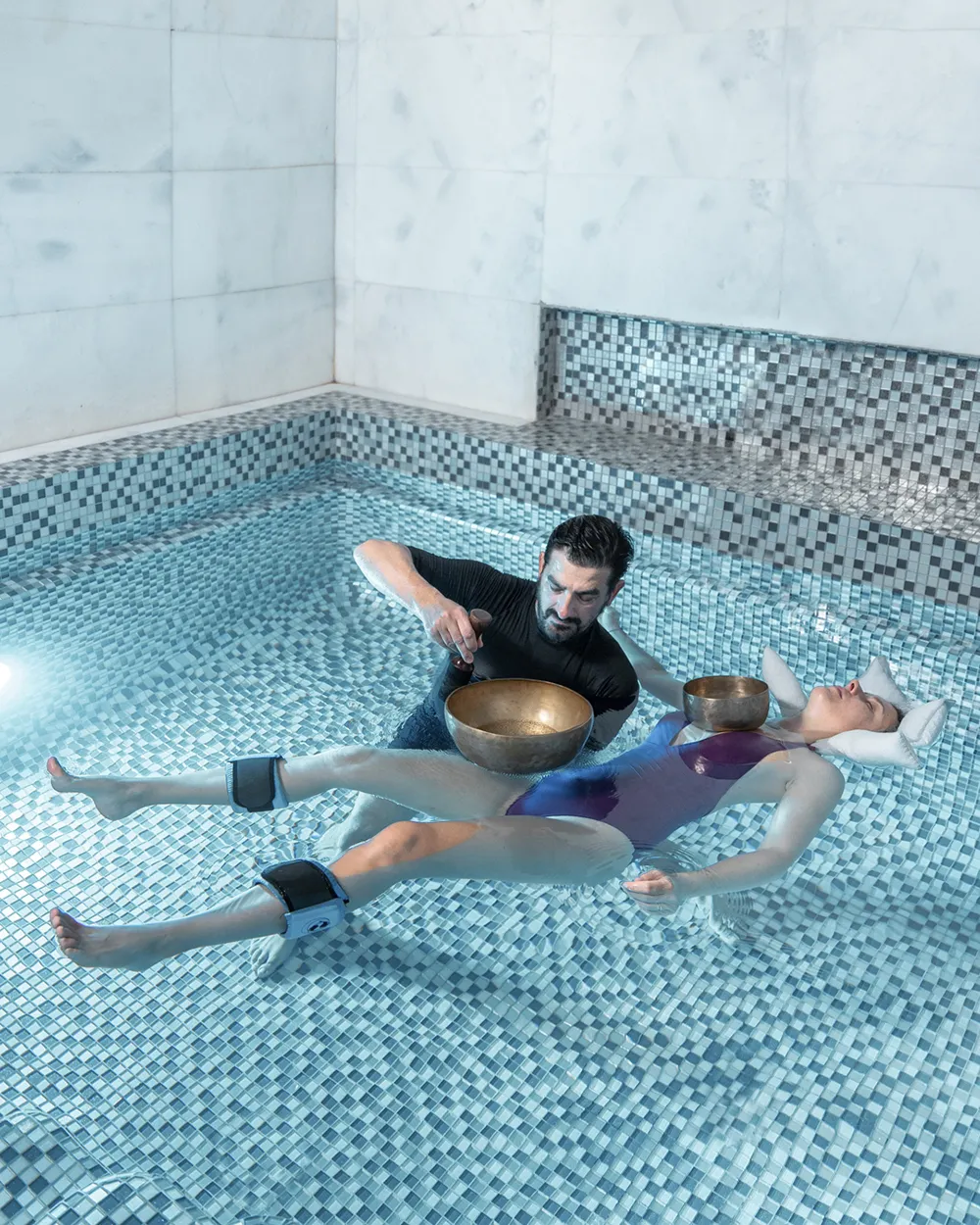
That SHA’s methods incorporate both Western science and alternative medicine makes it well suited to fortifying the body’s microbiome “You have everybody aligned to find your solution,” says Fernando Rojo, SHA’s general manager. “When [guests] come here, they have everything under one roof.”
For the gut retreat, expect a comprehensive GI test upon arrival, in which a stool sample is sent away to a lab to identify specific bacteria, plus an intravenous liver detox containing glutathione and vitamin C, and colon hydrotherapy, which flushes out your intestines with gallons of water. Turnaround time for the GI test can be sluggish—a report takes two to three weeks—but a doctor will explain the results on a follow-up call. I also have appointments with a medical doctor, a digestive physician and a psychologist (with whom I speak about emotional eating) and even undergo a form of lymphatic-drainage massage, conducted via machine, called pressotherapy.
Other treatments take a far more spa-like approach outside the boundaries of Western standards—and everyone on staff is required to buy in. “We will never have a doctor who doesn’t believe that acupuncture or physiotherapy or osteopathy are medical practices,” says Rojo. These sessions include a “hydro-energetic detox cure”, which has me marinating in a jetted bath with kelp cream and detoxifying herbal oil before being hosed down, and a “ginger therapeutic compress”, for which a hot, ginger-soaked towel is pressed onto my side—purported to be a way of cleansing the liver. At one point, I find myself lying on a sunbed while a therapist conducts a form of the traditional Chinese medicine practice called moxibustion, lighting artemisia and holding it over my midsection for 15 counts. It doesn’t hurt, but the burning plant is close enough that I can feel the heat from its flame. She explains that the fire will help “stimulate the small intestine”, and even admits, “This looks strange.” Odd or not, that night I have the best sleep I’ve had all week and wake up with a stomach as flat as the buckwheat pancakes I’ve grown accustomed to eating here.
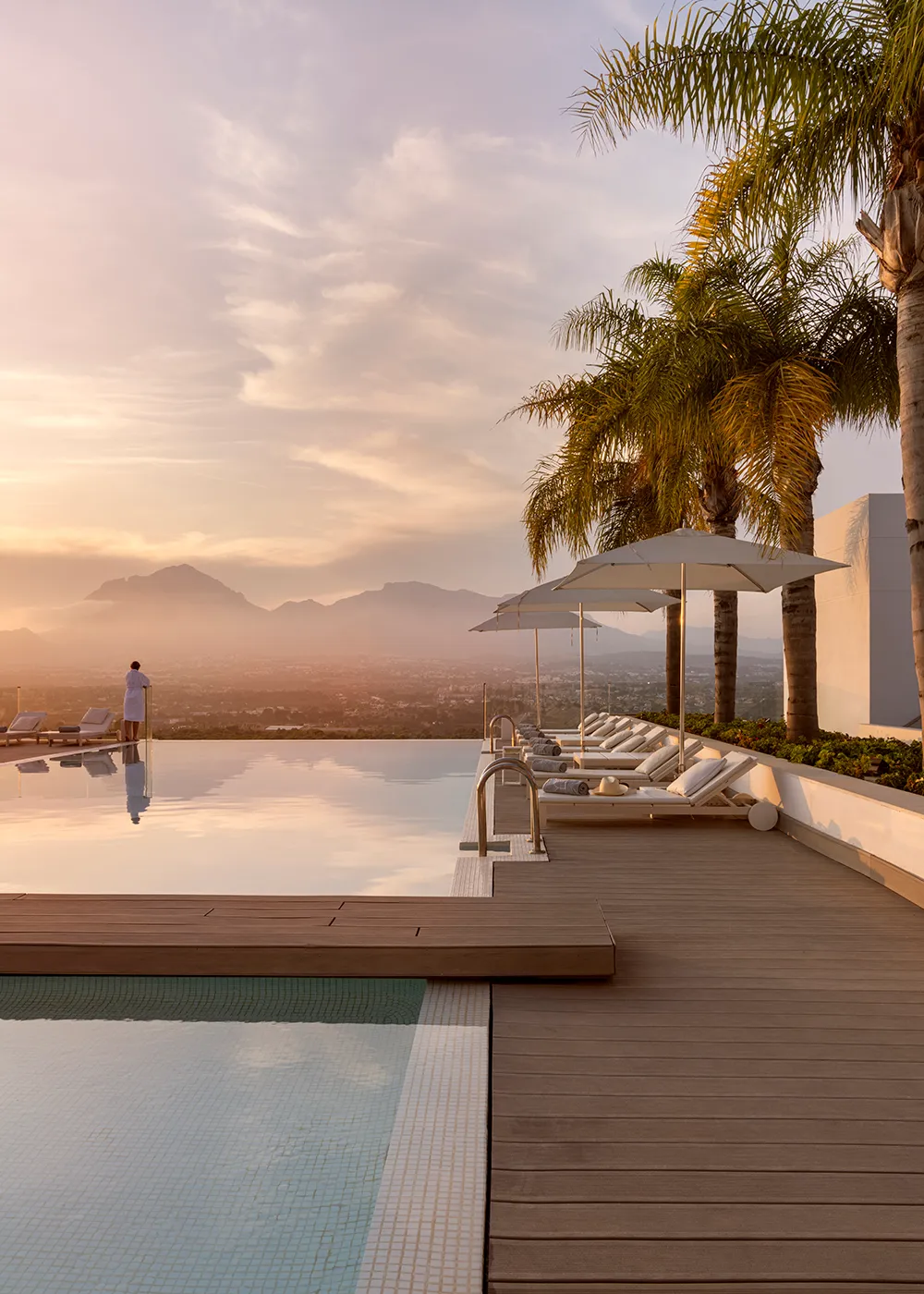
What ties everything together at SHA is nutrition, its lodestar. The restaurant’s menu is devoid not only of meat, cheese, eggs, caffeine and sugar, but also of spicy and oily foods. The strategy here is less about calorie counting and more about reducing toxins. To that end, the chefs focus on highlighting local, seasonal and organic ingredients, and incorporate plenty of grains, vegetables and seaweeds. For someone who has long followed a keto or low-carb diet, reducing protein and ramping up millet and quinoa goes against every fibre of my being, so to speak. But everyone at SHA, even the waitstaff, is so hell-bent on the benefits of the macrobiotic diet that there’s little point arguing.
For each meal there are three menus available—which vary from gastronomic to calorie-restrictive—but the cooks also prepare off-menu dishes for patients whose nutritionists recommend individualised eating plans. In these cases, meals get tweaked over the course of the stay according to how you’re feeling. Coming to Spain without indulging in Manchego cheese or a boozy carajillo coffee may sound boring, but eating at SHA really is healthy fine dining at its best. In the kitchen, head chef Andrés Morán creates flavour-packed meals from ingredients that would taste like cardboard if not prepared correctly. Tempeh is spun into ceviche, prawns are delicately draped with sheets of gluten-free pasta and drizzled with pumpkin miso, and almond- and rice-flour cakes are crusted with hazelnut. And while alcohol isn’t recommended, there’s a selection of fine wines on offer (though you have to sign a waiver if you want to deviate from the nutritionists’ orders).
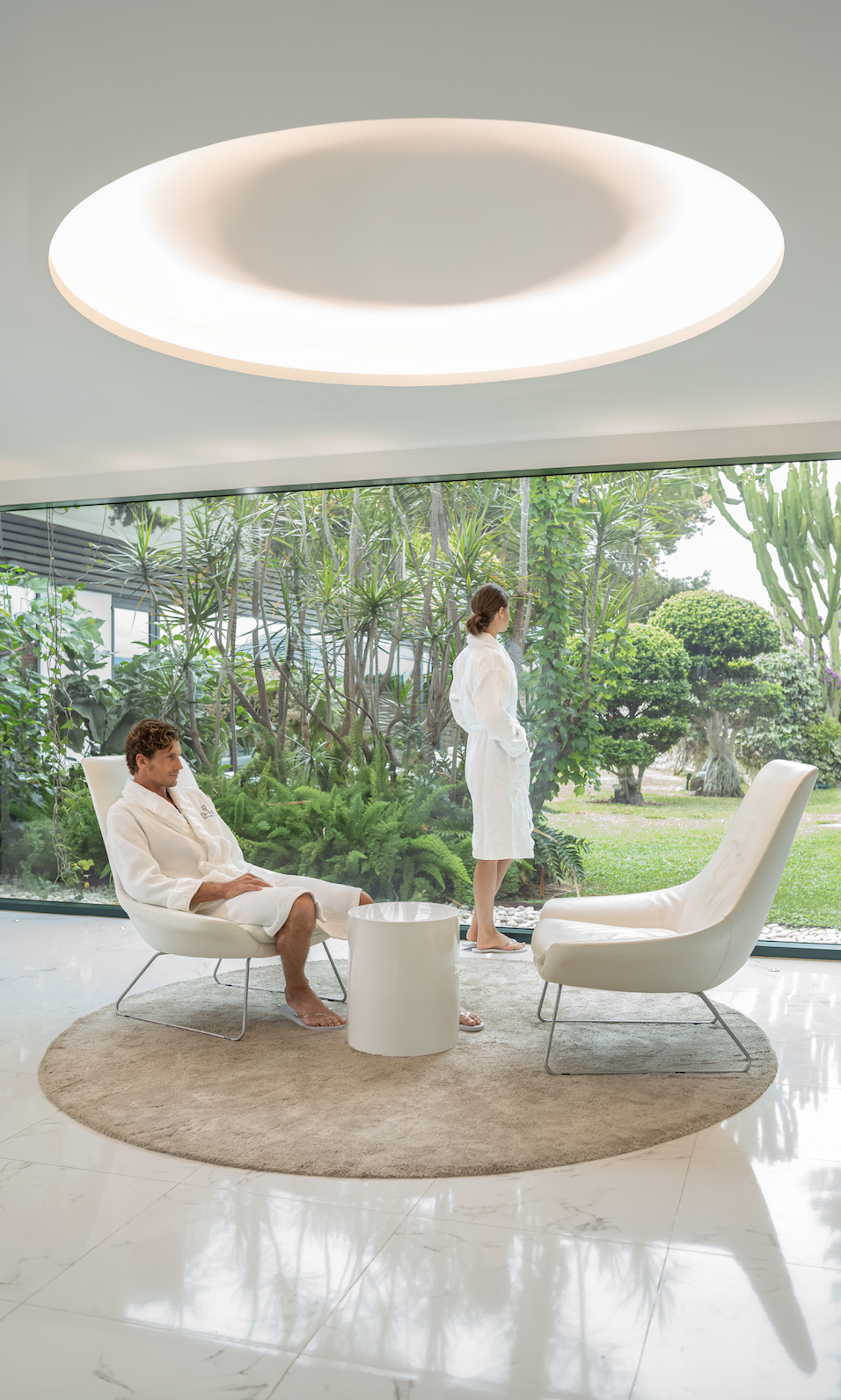
On a warm Friday evening, as the rosy sun is setting over the ocean and turning the landscape golden, I hear the distant sound of people having a party. It’s an idyllic Mediterranean summer moment that only a glass of wine might improve. But rather than envious, I feel smug. No hangover for me! Besides, the clinic has its own party, with a Spanish guitarist stringing songs and serenading diners. Instead of toasting with vino, we raise shots of vinegar in water (served before a meal, I am told, to help the body metabolise an amino acid called homocysteine and move glucose out of the bloodstream to prevent sugar spikes). A woman behind me even orders a glass of Champagne.
I don’t care to drink. After a full week of discipline, I feel both sharper and calmer, and I can finally button up my jeans without worrying I look pregnant—something I want to hang on to for as long as possible. I’m down to one caffeinated beverage per day, which I had negotiated with my nutritionist on arrival. My eyes look brighter, my skin is clearer and my stomach feels infinitely less bloated. I even start to look forward to my breakfast of miso soup, quinoa porridge with berries, and a second cup of non-caffeinated barley coffee with homemade almond milk.
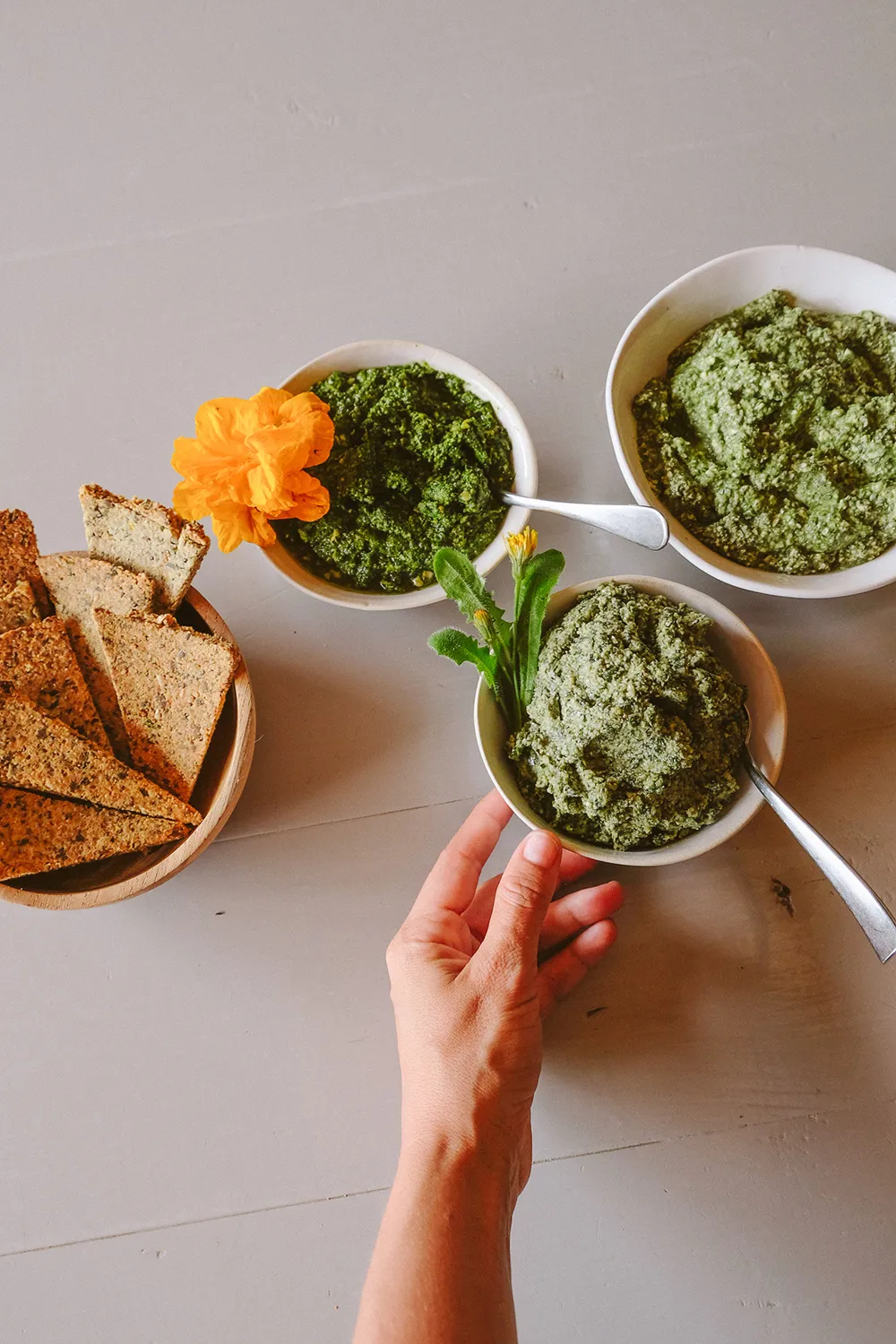
But while I don’t want to end my good-health streak, I also don’t feel like everything will fall apart when I return to life in the city. “If you drink one glass [of wine] and you’re enjoying with friends or family, or even yourself, that is important, too, because we have a very close relationship between the brain and the bowel,” Silva tells me when I break the news that abstinence doesn’t have a permanent place in my future. Happiness is good for the gut, she reminds me. “Just avoid anything processed!” she warns.
Unlike other wellness clinics with more rigid protocols, SHA’s flexibility makes returning to the real world easier. Guests go home with a nutrition plan and receive a follow-up call from a doctor. Test results and other data are handily saved in an app, making them easier to pass along to your local physician—and they’re a useful baseline for future visits. Which is key: the easy-does-it model means 50 percent of visitors return, often many times. One afternoon by the pool, I meet a repeat guest who’d previously gone to an Austrian clinic to detox and lose weight, which she describes as “life-changing” but “way too tough” to do twice. Not only does she find the food at SHA much more enjoyable, but she also likes the relaxed approach, which she can incorporate into her daily life. (Plus, when she leaves, she’ll have a tan.)
While waiting at Alicante Airport for my return flight, I notice legs of Ibérico ham dangling at all the kiosks, but I’m not tempted. I’ve been primed with good habits that obviate the need to summon my willpower. I’m also in the early stages of healing my sensitive digestive system, which still needs a few more weeks to set straight. I have yet to receive the results from my dysbiosis test, but because I tested positive for parasites and SIBO (small intestinal bacterial overgrowth) in the past and am still having symptoms, the medical team is confident my issues haven’t been resolved. “Sometimes these things can take three or even six months to heal,” Silva says.
Once I’m back home, she gives me a six-month treatment plan that begins with antibiotics, followed by a course of supplements including lion’s mane mushroom and curcumin. Silva also instructs me to increase the levels of nutrient-dense foods such as avocados and blueberries in my diet and to continue exercising. I start making that porridge for breakfast and ramping up my intake of salmon at dinner. Though I’ll never be fully macrobiotic, I’m no longer terrified of farro and chickpeas.
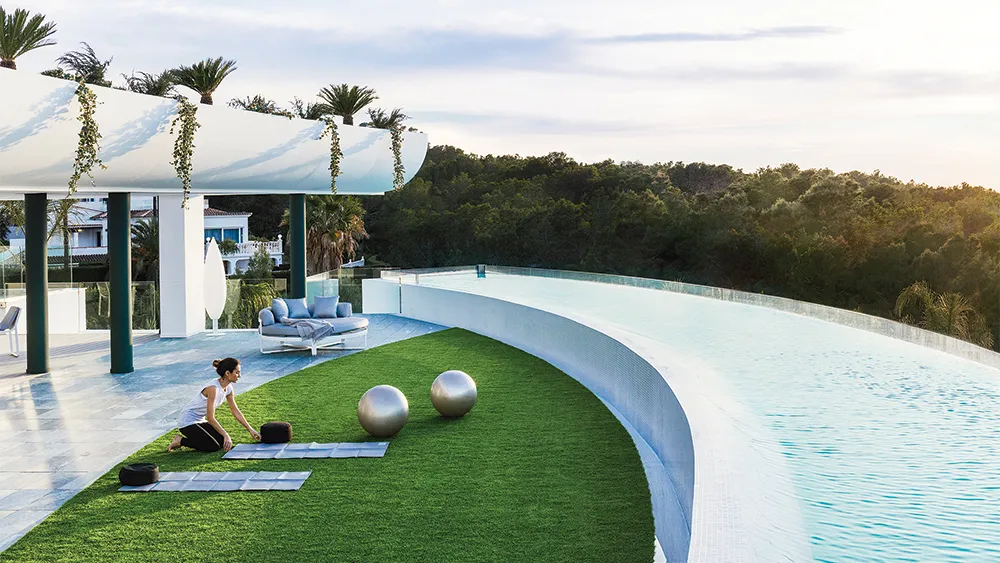
There are moments when sticking to a single glass of wine feels impossible, especially when friends come to town the week following my return. But by and large, the habits I learned at SHA have stuck. When I travel, I occasionally skip breakfast to let my digestive system rest. I generally avoid gluten and dairy, and I try to eat as much local, seasonal produce as possible. I also pack digestive enzymes and sometimes umeboshi plum paste, a superfood SHA’s nutrition team swears by because of its high polyphenol concentration. No matter where I am in the world, I meditate most mornings and do yoga, take a long walk, or hit the gym. I am in it for the long haul.
Finally, I receive my test results over a Zoom call: it had indeed found traces of both SIBO and parasites—unsurprising, considering my bloating is still flaring up (a nearly unavoidable symptom of SIBO).
What SHA reminds me is that although a week-long retreat can certainly fast-track gut health—while doubling as an amazing all-around respite—there are no quick fixes. Long-term solutions require a realistic, holistic approach along with healthy daily habits. And, sometimes, a glass of good wine. ●
Rates at SHA Wellness Clinic start at around $9,200 for the seven-day Rebalance program with gut-health add-on, plus around $665 per night for a deluxe suite.
Subscribe to the Newsletter
Recommended for you
Double-Vision
What happens when Australia’s most compelling artists turn their gaze on each other? The answer is Artists by Artists, a striking new book from Arts-Matter founders Michelle Grey and Susan Armstrong.
October 27, 2025
My Hong Kong
As the buzz around the East Asian cultural mecca amplifies, who better than two savvy, on-the-ground locals to curate an insider’s guide to the city’s essential experiences.
October 27, 2025
You may also like.
You may also like.
Radek Sali’s Wellspring of Youth
The wellness entrepreneur on why longevity isn’t a luxury—yet—and how the science of living well became Australia’s next great export.
Australian wellness pioneer Radek Sali is bringing his bold vision for longevity and human performance to the Gold Coast this weekend with Wanderlust Wellspring—a two-day summit running 25-26 October 2025 at the RACV Royal Pines Resort in Benowa. Sali, former CEO of Swisse and now co-founder of the event and investment firm Light Warrior, has long been at the intersection of wellness, business and conscious purpose.
Wellspring promises a packed agenda of global thought leaders in biohacking and longevity, including Sydney-born Harvard researcher David Sinclair, resilience pioneer Wim Hof, performance innovator Dave Asprey and muscle-health expert Gabrielle Lyon. From immersive workshops to diagnostics, tech showcases, and movement classes, Sali aims to make longevity less a niche pursuit for the elite and more an accessible cultural shift for all. Robb Report ANZ recently interviewed him for our Longevity feature. Here is an edited version of the conversation.
You’ve helped bring Wellspring to life at a moment when longevity seems to be dominating the cultural conversation. What drew you personally to this space?
I’ve always been passionate about wellness, and the language and refinement around how we achieve it are improving every day. Twenty years ago, when I was CEO of Swisse, a conference like this wouldn’t have had traction. Today, people’s interest in health and their thirst for knowledge continue to expand. What excites me is that wellness has moved into the realm of entertainment—people want to feel better, and that’s something I’ve always been happy to deliver.
There are wellness retreats, biohacking clinics, medical conferences everywhere. What makes Wellspring different?
Accessibility. A wellness retreat can be exclusive, but Wellspring democratises the experience. Tickets start at just $79, with options up to $1,800 for a platinum weekend pass. That means anyone can learn from the latest thought leaders. Too often in this space, barriers are put up that limit who can benefit from the science of biohacking. We want Wellspring to be for everyone.
You’re not just an organiser, but also an investor and participant in this field. How do you reconcile passion with commercial opportunity?
Any investment I make has to have purpose. Helping people optimise their health has driven me for two decades. It’s satisfying not just as an investor but as an operator—it builds wonderful culture within organisations and makes a real difference to people’s lives. That’s the natural fit for me, and something I want to keep refining.
What signals do you look for in longevity ventures to separate lasting impact from passing fads?
A lot of what we’re seeing now are actually old ideas resurfacing, supported by deeper scientific research. My father was one of the first in conventional medicine to talk about diet causing disease and meditation supporting mental health back in the 1970s. He was dismissed at first, but decades later, his work was validated. That experience taught me to look for evidence-based practices that endure. Today, we’re at a point where great scientists and doctors can headline events like Wellspring—that’s a huge cultural shift.
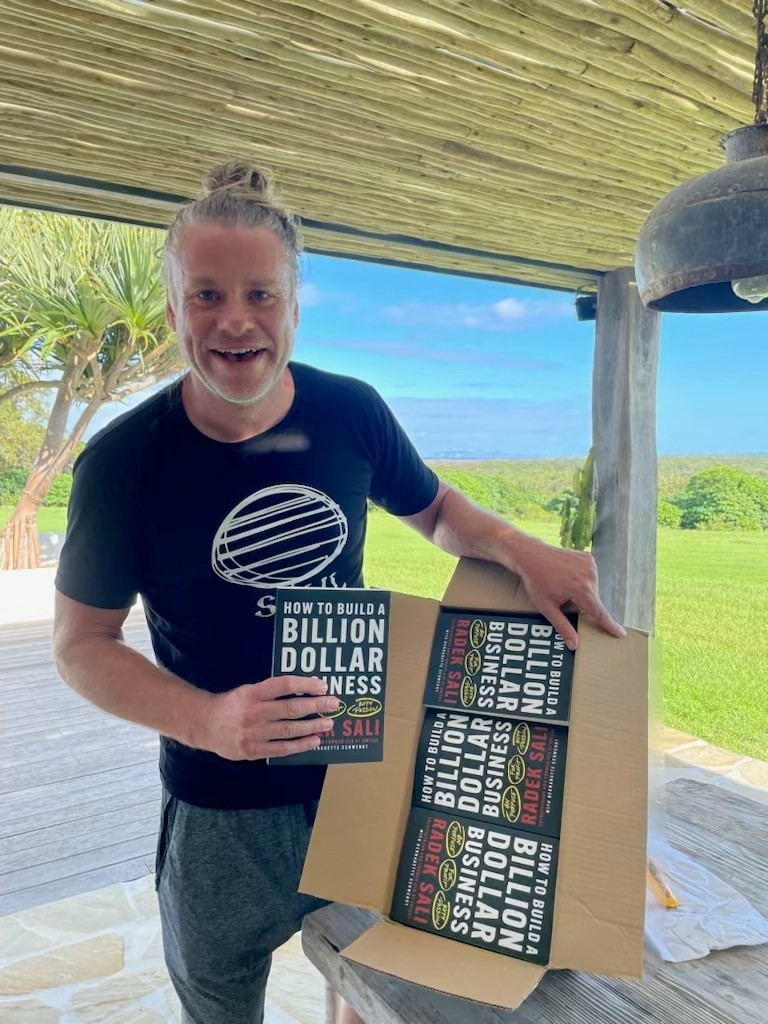
Longevity now carries a certain cultural cachet—its own insider language and status markers. How important is that to moving the field forward?
Health is our most precious asset, and people have always boasted about their routines—whether it’s going to the gym, doing a detox, or training for a marathon. What’s different now is that longevity practices are gaining mainstream recognition. I see it as something to be proud of, and I want to democratise access so everyone can ride the biohacking wave.
But some argue that for the ultra-wealthy, peak health has become a kind of luxury asset—like a private jet or a competitive edge.
That’s short-sighted. Yes, there are extremes, but most biohacking methods are accessible and inexpensive. Look at the blue zones—their lifestyle practices aren’t costly, yet they lead to long, healthy lives. That’s essential knowledge we should be sharing widely, and Wellspring is designed to do that in an engaging way.
Community is often cited as a key factor in healthspan. How does Wellspring foster that?
Community is at the heart of it. Just as Okinawa thrives on social connection, we want Wellspring to be a regular gathering place where people uplift each other. Ideally, it would become as busy as a Live Nation schedule—but for health and wellness.
Do you worry longevity could deepen class divides?
Class divides exist, and health isn’t immune. But in Australia, we’re fortunate—democracy and a strong equalisation process help maintain quality of life for most. Proactive healthcare, like supplementation and lifestyle changes, isn’t expensive. In fact, it’s cheaper than a daily coffee. That’s why we’re one of the top five longest-living nations. The opportunity is to keep improving by making proactive health accessible to everyone.
Some longevity ventures are described as “hedge-fund moonshots.” Others, like Wellspring, seem grounded in time-tested approaches. Where do you stand?
There’s value in both, but I’m more interested in sensible, sustainable practices. Things like exercise, meditation, and community-driven activities are proven to extend life and improve wellbeing. Technology can support this, but we can’t lose sight of the human elements—connection, balance, and purpose.
Finally, what role can Australia—and Wellspring—play in shaping the global longevity conversation?
The fact that we can put on an event like Wellspring, attract world-leading talent, and already have commitments for future years says a lot. Australia is far away, but that hasn’t stopped great scientists and thinkers from coming. We’ll be here every year, contributing to the global conversation and, hopefully, helping more people extend their healthspan.
You may also like.
‘Continuum’ Opens to Rave Applause at Sydney Dance Company
Rafael Bonachela’s latest curatorial triumph premiered last night at the Roslyn Packer Theatre, dazzling audiences with its emotional range and fearless physicality.
Sydney Dance Company opened its latest season with Continuum, a triple bill that reminds audiences why the ensemble remains Australia’s most compelling cultural export. Receiving a standing ovation at its premiere last night at the Roslyn Packer Theatre, the program unfolds as an elegant meditation on movement and metamorphosis—three distinct choreographic visions held together by Rafael Bonachela’s curatorial precision and instinct for contrast.
Stephen Page’s Unungkati Yantatja – one with the other breathes land, sea, and sky into motion; Tra Mi Dinh’s Somewhere between ten and fourteen lingers in the tender light between day and night; and Bonachela’s own world-premiere Spell delivers the evening’s visceral heartbeat. Together they trace the continuum of life itself—fluid, volatile, and impossible to pin down. Running through 1 November, the production affirms Bonachela’s vision of dance as “an ever-evolving conversation between artists, audiences, and the world around them.” Robb Report ANZ recently caught up with Bonachela.
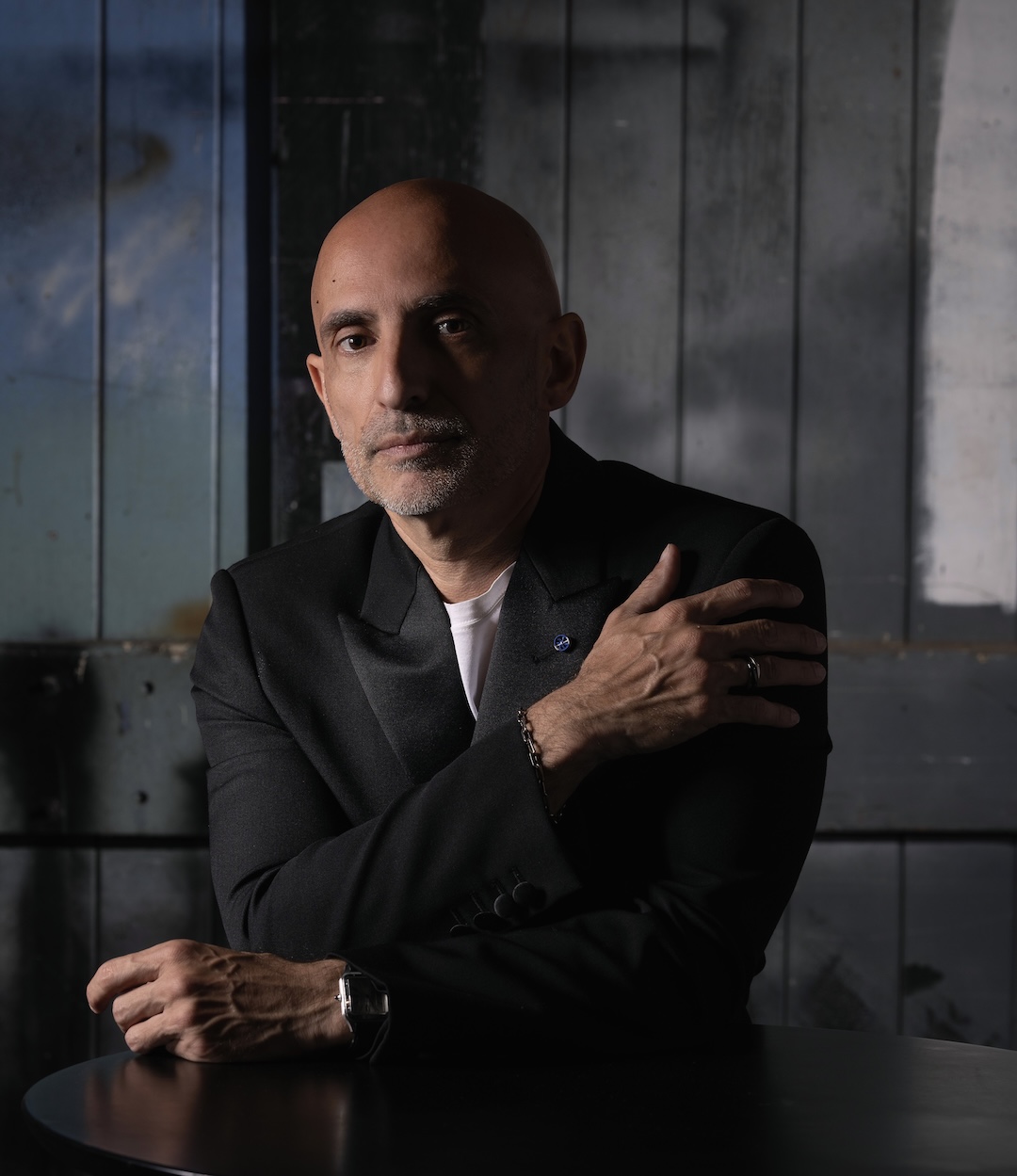
Continuum is described as “a bold exploration of the ever-shifting cadence that binds us to the world.” How did this idea of constant transformation influence your choreographic choices in Continuum?
I’ve curated this evening as an invitation for audiences to experience dance as an ever-evolving conversation—between past and present, between the individual and the collective, and between diverse artistic voices. My intention with this program is to spark connection, curiosity, and reflection, offering works that challenge, move, and inspire while revealing the transformative power of the body in motion.
Each choreographer brings a distinct perspective, yet all share a commitment to exploring the body in motion as a vessel for transformation. Through contrasting aesthetics, cultural resonances, and shifts in time, these works reveal how dance exists on a continuum—where moments build upon one another, find new meanings in fresh contexts, and affirm the enduring power of the human form to express what words cannot.
You’ve created the world premiere Spell within Continuum, which explores “the limits of emotional and physical expression.” What did you aim to conjure emotionally and physically through Spell, and how does it dialogue with the other works in the triple bill?
The title Spell itself suggests a duality—it can be something magical, but also something we fall under without even realising. Emotionally, I want to evoke an atmosphere that is at once intimate and volatile, where vulnerability and power exist side by side. There’s a ritualistic quality to the work, as if the dancers are caught inside a force they cannot quite escape—and it’s that tension which drives the movement and fuels the piece.
Within Continuum, Spell emerges as an intense, visceral heart—both contrasting with and speaking to the other works. While it shares the evening’s theme of transformation, it explores it through a lens of emotional ignition and fearless physicality.
In crafting Continuum, how did you balance moments of intimacy and expansiveness—especially when layering live elements like music and immersive lighting—to evoke that ebb and flow of life’s narratives?
In Continuum, each choreographer works with complete artistic freedom, without any direction from me. That independence brings out authentic contrasts and unexpected connections between the works. It’s this variety that invites audiences to engage on their own terms, discovering personal meanings and emotional threads that are unique to each viewer.
This triple bill seems to offer a journey through time and place—from twilight’s fleeting beauty to elemental breath. How do you want audiences to experience—and perhaps rethink—the relationship between movement, nature, and storytelling?
I always want audiences to come with an open mind and allow the experience to be unprescribed free to discover their own meanings and narratives. Dance has the unique power to be felt as much as it is seen, to resonate physically and emotionally in ways words can’t. I hope audiences leave with a renewed sense of how deeply movement is connected to the natural world, and how it can tell stories without language. Like nature, this evening is always in motion—emerging, transforming, and fading—so that each work becomes a landscape the audience can journey through, sensing their own place in the continuum of life
Looking ahead, does Continuum carve out a new direction or personal milestone for your artistic trajectory? What might this signal for your future choreographic explorations?
Continuum feels like both a culmination and a starting point. It gathers threads from my past work, my fascination with transformation, my love of collaboration, my search for emotional truth and weaves them into something that opens new doors.
Creating and curating this triple bill has changed how I see works interacting—how contrasting voices can strengthen shared themes. It’s inspired me to explore even more fluid boundaries between ideas, styles, and disciplines.
If it signals anything for the future, it’s that I’m interested in going further into that space where dance is not just movement, but an ongoing conversation—between artists, between forms, and between audiences and the world around them.
Continuum runs through November 1 at the Roslyn Packer Theatre.
You may also like.
Inside the $30 Billion Obsession Among the Ultra-Wealthy : A Race to Live Longer
The pursuit of an extended life has become a new asset class for those who already own the jets, the vineyards, and the art collections. The only precious resource left to conquer, it seems, is time.
If you want to know what the latest obsession is these days among the ultra-wealthy, listen in at dinner.
Once it was crypto, then came AI and psychedelics, now it’s longevity all the time. The talk is of biomarkers, NAD+ levels, and methylation clocks, of senolytics and stem cells. Guests compare blood panels like wine lists, and the most important name to drop is no longer your banker or contact at Rolex but your longevity physician. For those just arriving at the conversation, the new science can sound like science fiction—but it’s fast becoming the lingua franca of money.
The field has its own vocabulary—epigenetic reprogramming, which aims to reset cellular clocks; cellular senescence clearance, the removal of “zombie” cells that clog our systems as we age; precision gene therapies, designed to personalise interventions at the level of DNA—that sounds equal parts Brave New World and Wall Street pitch deck. But make no mistake: this is no longer a niche pursuit. The sector is already worth an estimated $30 billion globally and projected to surpass $120 billion within the decade, having attracted billions in investment from the likes of Altos Labs, Juvenescence and Google-backed Calico. Tech titans and old-money families alike are staking claims on the possibility of an extra decade or two. It’s a space where venture funds court Nobel laureates, hedge funds bankroll gene-therapy moonshots, and even wellness festivals in Australia draw rock-star scientists to the stage.
The Poster Child and the Pitch
David Sinclair, the Sydney-born Harvard geneticist who has become something of a poster child for the field, is quick to underline the stakes. “We’re not just talking about lifespan, we’re talking about health span,” he tells Robb Report. “Extending the number of years people live well—without frailty, without disease—isn’t just a medical breakthrough. It’s a social and economic one.” Sinclair, whose research ranges from NAD boosters to epigenetic age-reversal therapies, has calculated that adding a single year of healthy life to the US population, for example, could be worth $38 trillion in economic benefit—fewer years of costly aged care, less burden on hospitals, more years of productivity and compounding returns. In other words, the dividends of health are financial as well as personal. “That’s why governments and investors are paying attention,” he says.
Sinclair has become a fixture on the global circuit, drawing crowds that rival TED or Davos. As Radek Sali, the Australian entrepreneur behind the new Wanderlust Wellspring longevity festival taking place on the Gold Coast this October, where Sinclair is the keynote speaker, puts it: “Wellness has moved into the realm of entertainment.” At Wellspring, platinum-tier guests pay up to nearly $2,000 for the privilege of hearing scientists and investors share the stage over a weekend like headliners at Coachella.
Investing in Time
And then there are the sideshows. Bryan Johnson, the tech mogul turned human guinea pig, makes headlines with his open-source, organ-by-organ data tracking—his infamous “penis readings” have become cocktail-party fodder. While many dismiss him as a parody of the field, his multimillion-dollar project Blueprint has nevertheless made longevity impossible to ignore in the mainstream.
For the uninitiated, the science of longevity today is no longer about vitamin salesmen or fringe dietary regimes. This is the new frontier—one where biology is not just observed but engineered, and where investors smell opportunity on par with space travel. It’s little wonder that Altos Labs has raised billions to chase cellular rejuvenation, or that Juvenescence has secured more than $400 million to fast-track therapies. What was once the realm of eccentric tinkerers now attracts sovereign wealth funds.
“This body takes me to meetings, earns me money—why not invest time and money into it?”
The appeal to the One Percent is obvious. Longevity is a natural extension of portfolio thinking: diversify your assets, hedge your risks, and above all, maximise return on investment. Except in this case, the returns are measured in years of health, energy and cognition. As Andrew Banks, a Sydney-based entrepreneur and early investor in Juvenescence, explains: “This body takes me to meetings, earns me money—why not invest time and money into it?” His Point Piper home teems with contraptions—a Reoxy breathing machine, hydrogen therapy, red-light sauna, and he spends a few hours a day on maintenance, as if his body were a private equity stake.
Banks, like others in his cohort, is baffled that more wealthy men haven’t followed suit. “Entrepreneurs pride themselves on divergent thinking,” he says. “They expand, dream and create businesses with it. But when it comes to their bodies, they’re convergent—unimaginative. The lack of curiosity is astonishing to me.”
Medicine 3.0 and the New Rituals
Steve Grace, a Sydney-based entrepreneur and the proprietor of exclusive private networking club The Pillars, which is opening a longevity program, thinks there is a reckoning coming for those who do not take matters into their own hands. “As someone who has run a few recruitment businesses,” he says, “I can tell you that if you’re a man or woman in your 50s and working as an employee, even in a really good position, it’s time to get worried about job security and being aged out of the workforce. You have to make yourself as vital as possible and become the best version of yourself, or you’re toast.”
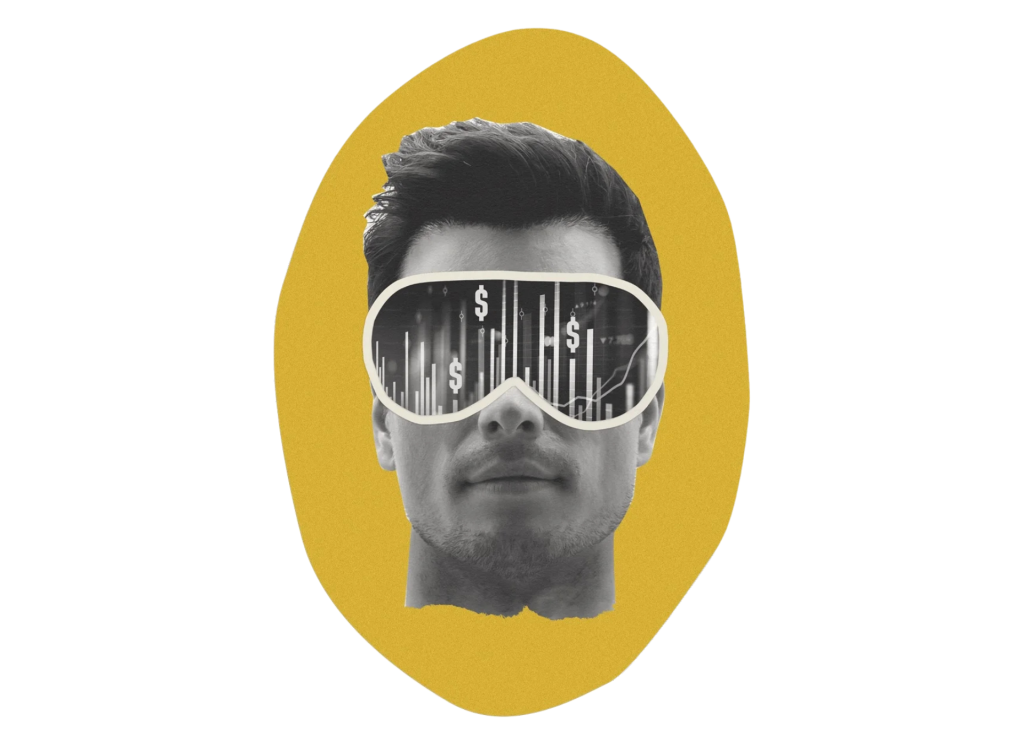
What was once fringe has now become a cultural necessity for those who can afford anything, with science finally catching up to ambition. Sinclair’s lab at Harvard recently published a study on the reversibility of cellular ageing—restoring vision in blind mice and setting the stage for human trials in conditions like glaucoma. In Boston, his company Life Biosciences will begin treating patients with blindness in a Phase I trial using partial cellular reprogramming early next year. “This isn’t science fiction anymore,” Sinclair says. “We’re at the point where we can reprogram cells, turn back their biological clocks, and restore function.”
Meanwhile, practitioners like Dr. Adam Brown of the Longevity Institute in the Sydney suburb of Double Bay are reinventing diagnostics. His “assessment menu” has been compared—only half-jokingly—to a Michelin Guide for medical testing: full-body MRI scans, continuous glucose monitors, polygenic risk scores. “What we do is proactive, not reactive,” he says. “Correct deficiencies first, then optimise health. That’s how you get peak performance in the short term and resilience in the long term.” Brown frames longevity in terms that would resonate with any investor: “There’s a short-term ROI—fixing glucose or sleep issues so you perform better tomorrow. And there’s a long-term ROI—functioning in your 70s as you would in your 40s. That’s extending your career, your income potential and your independence.”
“Once upon a time, male vanity meant injectables, veneers and a tan. Today, it’s VO2 max scores and continuous glucose monitor readouts.”
Peter Attia, the Canadian-American physician and podcast host who has helped popularise the concept of “Medicine 3.0”, echoes this emphasis. Medicine 1.0, according to him, was about surviving infections. Medicine 2.0 was about treating chronic disease. Medicine 3.0 is about staying ahead of decline: measuring, monitoring and intervening early. “The goal is not just to avoid disease but to lengthen health span,” Attia has said.
For those already converted, longevity is less about lab science than daily rituals. Sydney-based Chief Brabon, who trains CEOs like athletes, says: “These men are like Formula One cars—you don’t wait until the tyres are bald before swapping them. You keep everything tuned, precise, optimised.”
That tuning now involves more gadgets than ever: hyperbaric oxygen chambers, cryotherapy, sauna/cold-plunge circuits, peptide stacks, nootropics. And yes, a glut of supplements, some with evidence, others little more than wishful thinking. Once upon a time, male vanity meant injectables, veneers and a tan. Today, it’s VO2 max scores and continuous glucose monitor readouts. “Health is the new flex,” as Steve Grace quipped, glancing at his wrist-worn biometric tracker.
The New Flex: Health as the Ultimate Luxury
Still, there is plenty of scepticism. Some therapies are unproven, others prohibitively expensive. And there is the unavoidable fact that many leading scientists, including Sinclair, have stakes in companies producing supplements and therapeutics, raising eyebrows about conflicts of interest. “The difference,” Sinclair insists, “is whether it’s backed by peer-reviewed science and measurable biomarkers. If it can’t be quantified, it’s marketing, not medicine.”
Then there are the contradictions. It promises democratisation while often priced like a private club. It champions science but thrives on hype. It seeks to extend health span but risks deepening class divides. “Only if we let it,” Sinclair says when asked if longevity risks becoming the preserve of the wealthy. “Like antibiotics or aspirin, these advances should become widely available and affordable once they scale.” Sali agrees, but from another angle: “Biohacking doesn’t have to be expensive,” he says. “The blue zones prove that—community, diet, movement, purpose. Those are free. Wellspring is about making that knowledge accessible.”
And yet, for all its shortcomings, the movement is here to stay. Investment continues to pour in. Technology—like senolytic drugs that clear aged cells or AI-driven platforms that predict individual disease risk years in advance—is moving from speculation to clinical trial. Scientists are being recast as influencers. And the wealthy, always in search of the next advantage, have found in longevity a pursuit as old as alchemy, yet dressed in the language of venture capital. The truth is that health has always been an asset. What’s new is that it’s now being traded, optimised and measured like one.
In the end, longevity is less about a moonshot than about curiosity. Banks, Sali, Sinclair, Attia are all, in their own way, betting on time. Perhaps the most radical idea is also the simplest: that the best-performing asset in any portfolio is the body itself. Unlike Bitcoin, it carries you to meetings. Unlike art, it cannot be stored in a vault. Unlike real estate, it is non-transferable.
The new calculus of longevity is the recognition that the ultimate luxury is not wealth or status, but a few more decades of clear thought, strong bones and good company—and the ability to make money off it. Everything else, as one investor put it, is just a rounding error.
You may also like.
How Sailing Shaped Loro Piana’s Most Iconic Designs
Pier Luigi Loro Piana grew his family textile business into a celebrated fashion house by following his passion for sports on land and at sea.
The Regatta Connection
The race village at Port de Saint-Tropez is awash with people in nautical navy and white, the de facto dress code for the Loro Piana Giraglia regatta. This is the second year the fashion house has lent its name to one of the Mediterranean’s most prestigious summer races. The course zooms from the French coast to Genoa, Italy, taking a sharp turn past Giraglia, a small island off Corsica’s northern tip. It’s the latest in a long line of marine events the brand has sponsored, dating back more than 20 years.
The link between sailing and the brand—and more consequentially the Loro Piana family—is exemplified by the man Robb Report is here to meet: Pier Luigi Loro Piana. An avuncular figure in his 70s with the physique of a man who has enjoyed life, Pier Luigi fell in love with sailing in his late teens, when a family friend took him for a cruise in a sloop.
“Using the wind to go faster or slower, driving the boat like it has an engine, it’s really fascinating,” he says. Inevitably, he started competing. “When you’re sailing, you’re always looking for other boats to go and fight with. It’s an instinct,” he says. And then, with considerable understatement, “I think it’s a nice hobby.”
A Life Under Sail
He currently owns two boats: My Song, which you can see on these pages, is a 25 m sailing yacht that competed in the Regatta. There’s also Masquenada, a comfortable 50 m explorer. It’s a commendable set-up befitting a man who shaped one of Europe’s most celebrated fashion houses.
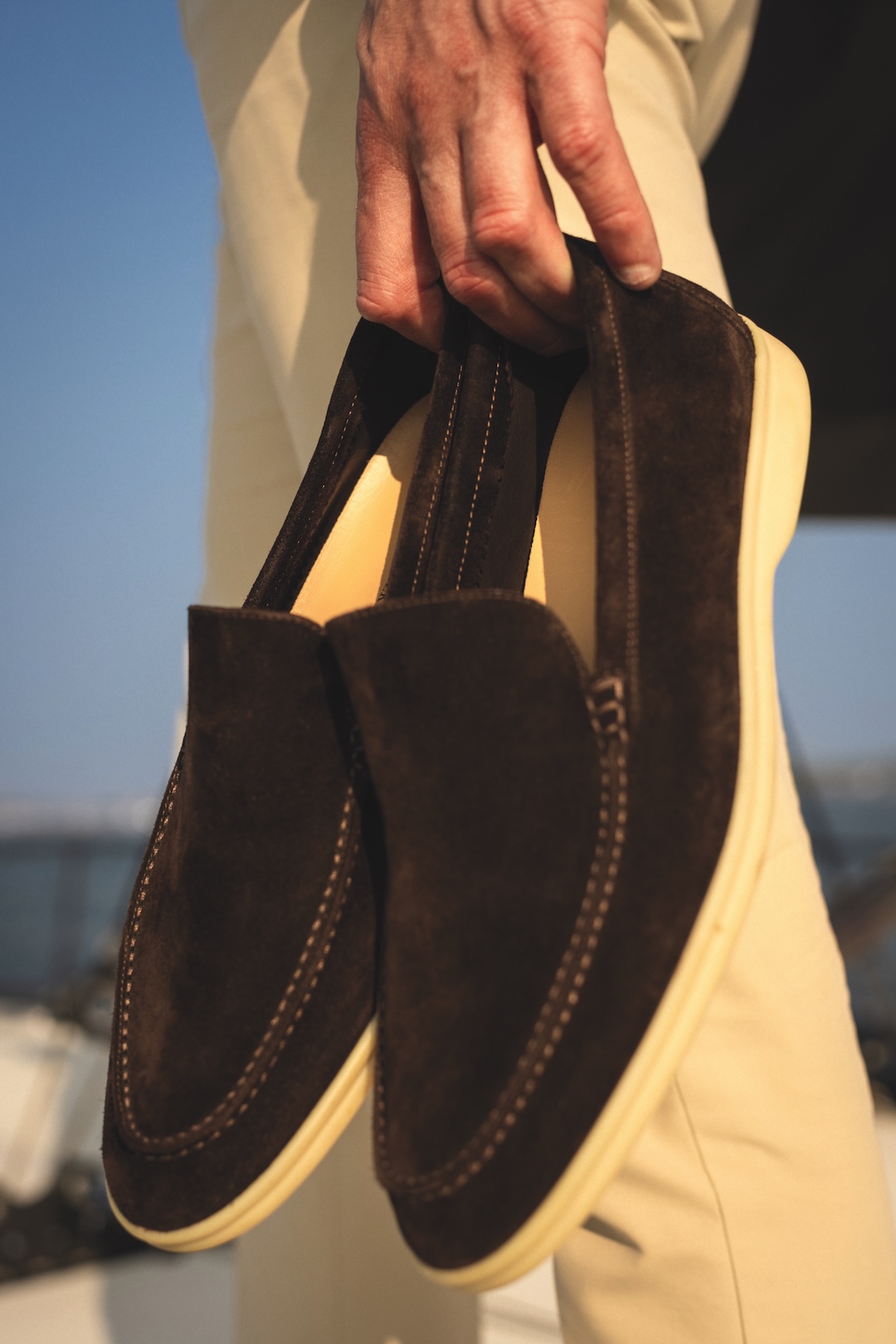
A Family Business Turned Global Powerhouse
The textile and clothing company that bears his family’s name was launched by an ancestor, Pietro Loro Piana, in 1924. A few generations later, Pier Luigi and his brother, Sergio, would run it for four decades until LVMH acquired a majority stake for around $4 billion in 2013. Sergio passed away that year; his widow and Pier Luigi still own a share of the brand between them.
The brothers proved innovative custodians, moving the company upmarket with an insistence on ultra-fine materials and groundbreaking fabrications. And the connection with sports—specifically yachting, horseback riding, skiing and golf—is integral to how the brand positions itself. As Pier Luigi recalls, such associations often had self-serving origins.
“These are the sports my brother and myself were doing,” he says. “We were very committed in business in the 1970s, ’80s, ’90s, so we were like our customers: people that like to work hard but also play hard. And that meant sports.”
Innovation Born of Necessity
This affinity often led them to develop durable, yet elegant, materials and gear for their off-duty pursuits, eventually offering versions to their athletic clientele. “We engineered products with unusual properties, natural fibres like wool or cashmere with a membrane that makes it waterproof and windproof… For research and development, I was the first victim,” he says with a chuckle. Once, he wanted a ski jacket that was “warmer, lighter, softer and better” than nylon models, so he made a prototype to test on the slopes. It gave birth to the Loro Piana Storm System, launched in 1994. The line’s wind-resistant waterproof wool and cashmere has since been used by brands around the world. “I still have this jacket,” he says.
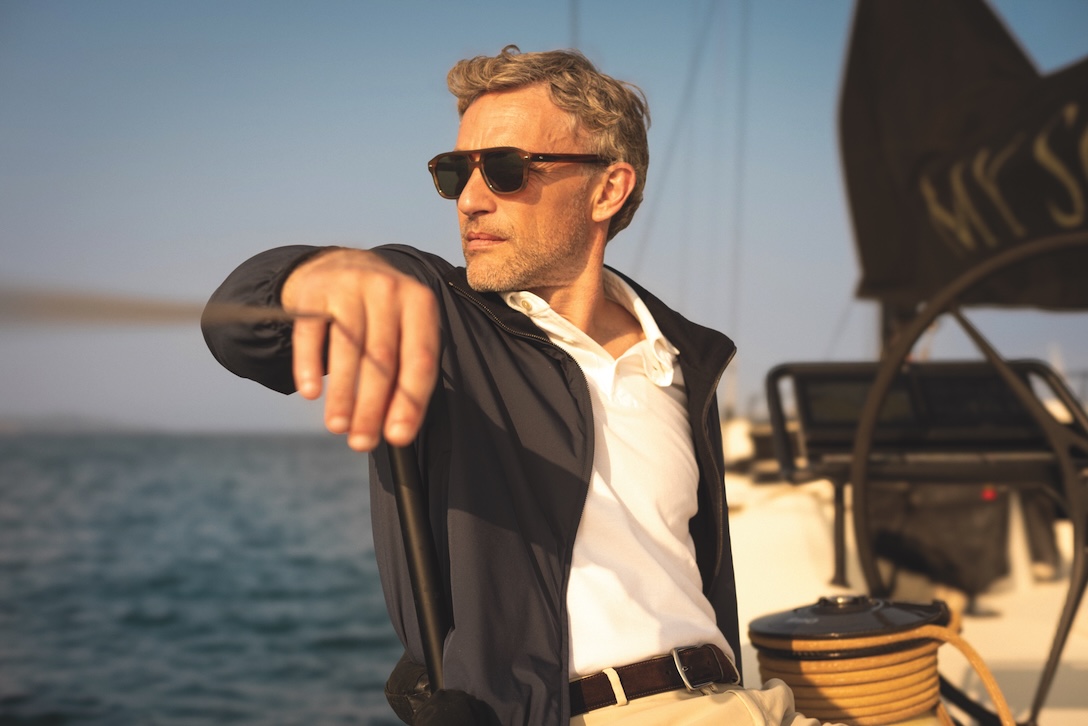
The same process happened on the water. A beloved reversible bomber, with knitted cashmere on one side and waterproof polyester on the other, was born from Pier Luigi’s need for a functional jacket to wear on his yacht. “It’s very light, doesn’t wrinkle, it’s warm, windproof,” he says. “It solves so many problems.”
He takes less credit for perhaps the brand’s most famous—and almost certainly most imitated—product, the white-soled suede Summer Walk loafers. “That was my brother,” he says. “When we were 20, 30 years old, we went sailing and there were only [Sperry] Top-Siders or Sebagos. But when the soles got worn, they got hard and slippery.”
The answer: a non-marking sole with grip—“like a tire you use in Formula 1 when it’s wet”—which Sergio got his bespoke shoemaker to sew to suede uppers. Eventually, they produced two versions: a loafer and the Open Walk, a model with a slightly higher top. “We discovered people were using them also for formal wear because they were so comfortable,” says Pier Luigi. “It’s really a successful story that started from product research.”
And if problem-solving can turn your family business into a giant of global style, clearly it pays to be a little selfish.
You may also like.
23/10/2025
The Supercar of Pool Tables
In a rare fusion of Italian design pedigree and artisanal craftsmanship, Pininfarina and Brandt have reframed the barroom game as aerodynamic high art.
In the rarefied realm where leisure meets design, the latest object of desire doesn’t purr down the autostrada—it commands the room from a single sculptural base. The Vici pool table, a collaboration between Italian automotive legend Pininfarina and Miami’s bespoke table-maker Brandt Design Studio, reimagines the game with the same aerodynamic poise and artisanal precision that have graced some of the world’s most beautiful vehicles.
Named for Julius Caesar’s immortal boast—“Veni, vidi, vici”—this limited-edition series transforms billiards from casual diversion into a declaration of style. Every curve is deliberate, from the ultra-thin playing surface clad in tournament-grade Simonis cloth to the seamless integration of Italian nubuck leather and precision-milled metals. The effect is more haute sculpture than barroom pastime—yet it meets exacting professional standards.
For the true connoisseur, the debut PF 95 Anniversario edition celebrates Pininfarina’s 95-year legacy in just 95 numbered pieces. Finished in dark-blue lacquer with rose-gold accents and a flash of red felt, each table is discreetly nameplated—a tangible claim to an heirloom in the making.
“It’s not just about how it plays—it’s about how it lives in a space,” says Dan Brandt, the master craftsman whose work has long graced the world’s most exclusive interiors. Whether anchoring a penthouse salon, a members’ lounge or the main deck of a superyacht, the Vici is designed to stir conversation before the first break.
For those accustomed to Pininfarina’s sleek automotive silhouettes, this is a chance to bring that same lineage of movement, form and Italian refinement into the home. Only now, the horsepower is measured not in engines—but in the geometry of a perfect shot.
From pool to midcentury to Ottoman, we’ve got all the table angles covered at Robb Report Australia & New Zealand —plus more home-worthy pieces.






